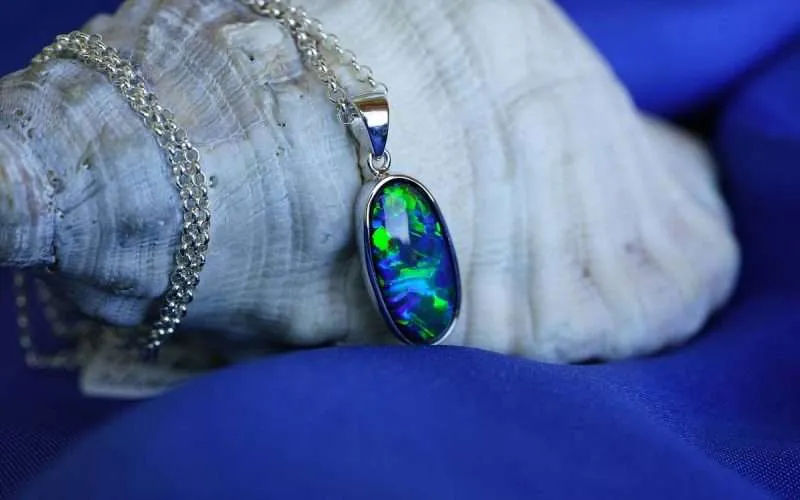Table of Contents Show
Opals seem to have a history connected to them, and it is quite interesting. Whether you follow the ancient Greek version of it, or more recent theories, one thing is certain: opal formation is connected to the action of water.
One of the most startlingly gorgeous gemstones on the planet, rain is said to be the source of the ever-striking beauty of the common opal.
That, or, of course, it could be the tears of joy Zeus wept after winning against the Titans that helped form the beautiful opal.
Despite no universal agreement on the formation of the common opal, the most common belief is that rain is the source of the precious opal’s aesthetic beauty.
The following is a collection of some of the most unique and precious opal stones on the planet.
11 Types of Precious Opal Stones
1. Black Opal
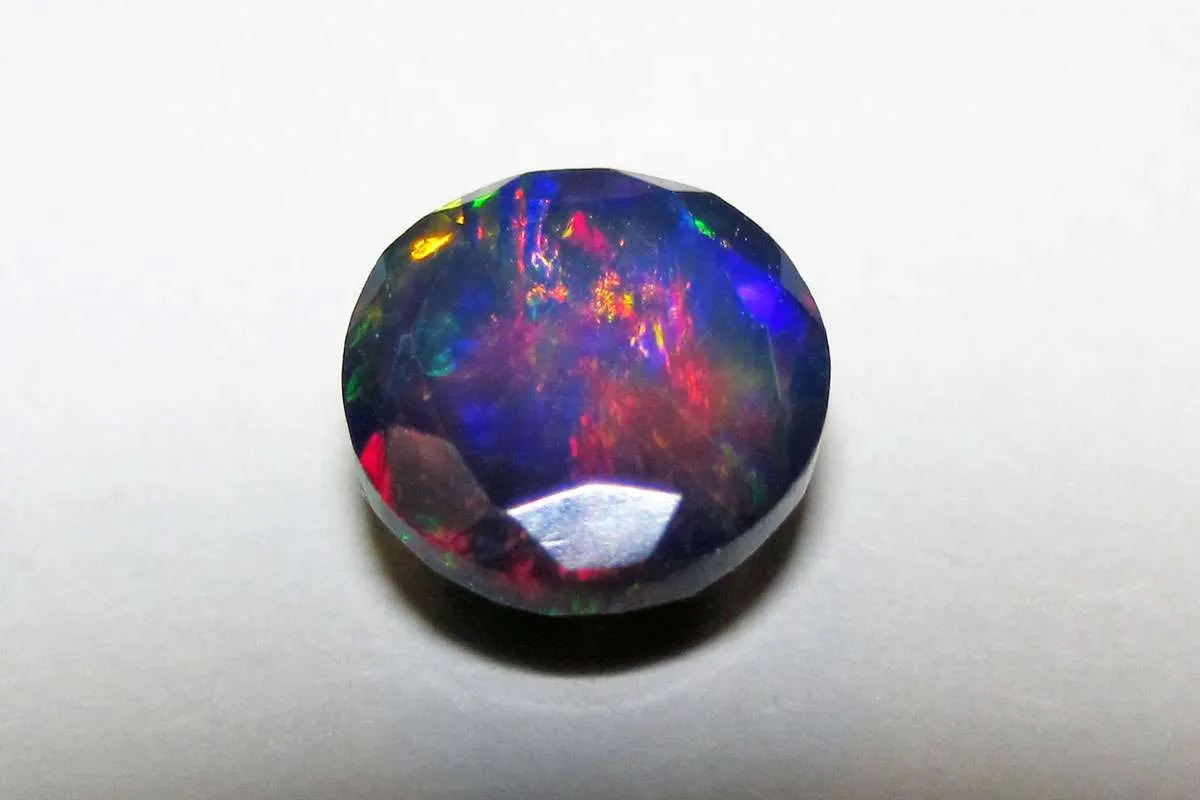
No list of opals could ever be considered complete without mentioning the famous Black Opal sometimes also referred to as the Australian black opal. A Black Opal is one of the rarer, and also one of the most precious forms of opal that exists in the world today.
The naturally occurring black opal isn’t exactly a pure black stone as the common misconception about it seems to suggest. Instead, the black opal tends to have a black undertone to it.
The black opal is easily recognizable from other kinds of opals as the classic play of color pattern common to all opals is present on a black background.
This is occasionally referred to as “black body color.” The Black opal is a precious Australian opal native to Lightning Ridge, South Australia.
2. Boulder Opal
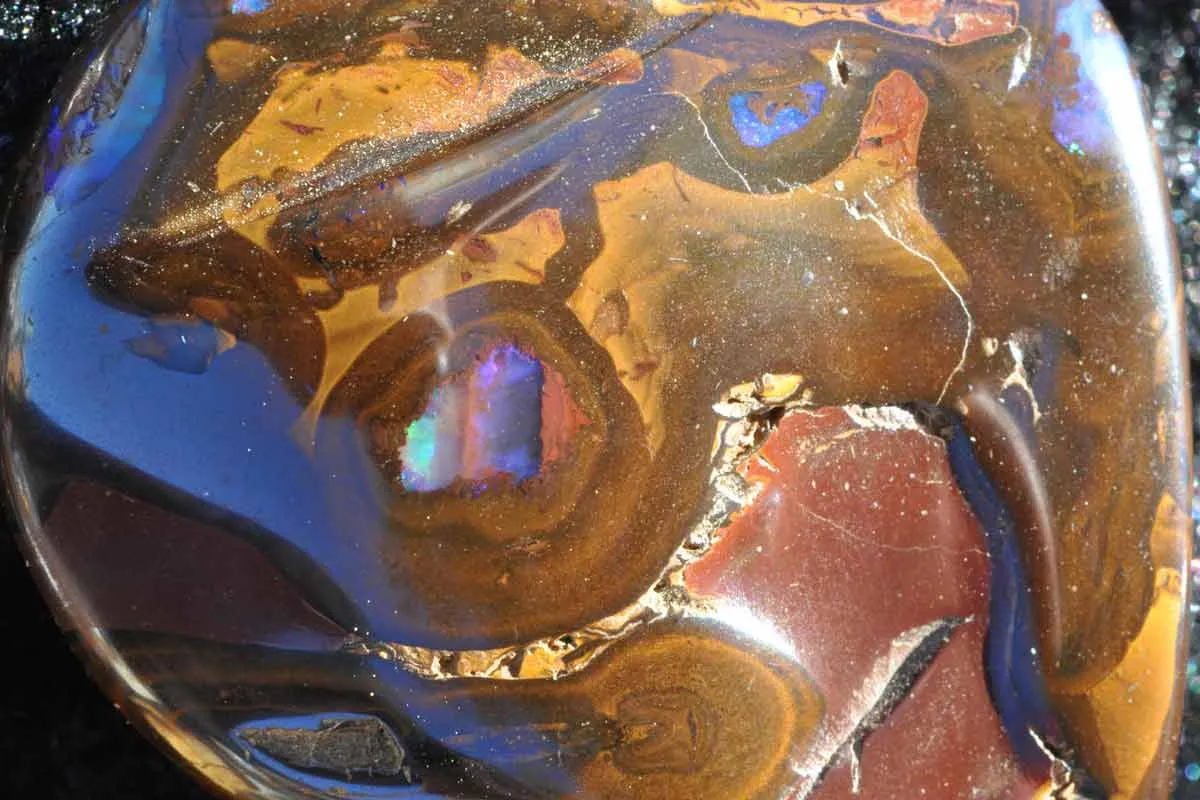
The Boulder Opal is another example of an Australian opal stone that is also mostly found in South Australia. It is common in the Queensland area of the country.
This particular stone is usually not a completely solid opal gem. Instead, it is an opal-covered boulder or stone. The Boulder Opal usually forms around a host piece of rock (or boulder), which also naturally becomes a part of the gem.
The opal presents itself as in-fillings of fissures and voids in the boulder. This is especially true in the case of an ironstone boulder. Most of the gem, therefore, is just the host rock while the opal itself is like a thin veil over the boulder.
Boulder opals can be dark or bright in color, depending on how the host boulder appears when seen from the surface. Boulder opal also has a tendency to cleave. When this happens, the “split” leaves two opal faces, one that is naturally polished and the other that is not.
3. Australian Fire Opal
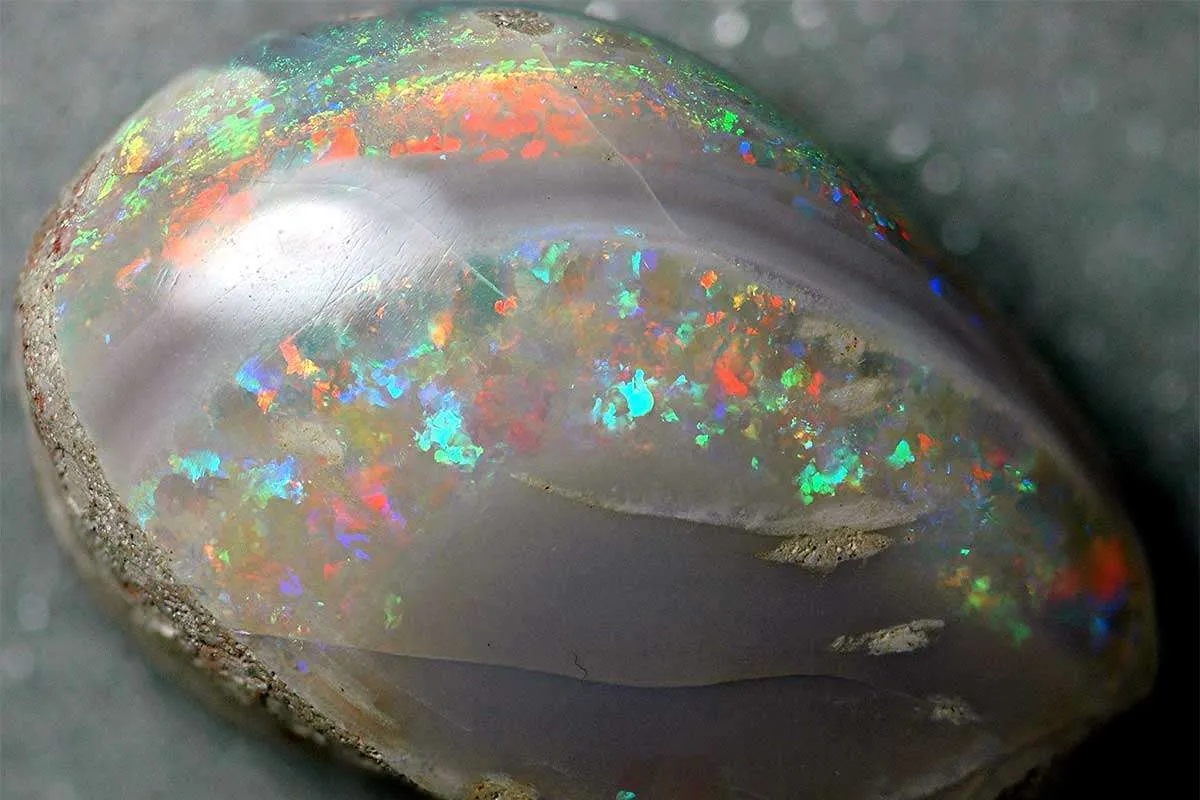
Many people get confused by the term ‘fire opal’ because there are actually a few different types of fire opal that are native to different regions of the world.
For this reason, it is a common error to confuse the Austrian Fire Opal with the precious opal, even though the two are extremely different from each other. The Fire Opal is a form of opal that has bright shades such as yellow, orange, and red.
While fire opals are mostly found in Australia, they are also mined at the Queretaro cast mines. These stones may also be found in Honduras and the United States of America, where other more valuable varieties are reported to be plentiful.
A Mexican fire opal, on the other hand, is different. These delicate stones are often transparent to translucent that appear in blazing hues, hence earning them the name ‘fire opal.’
4. Dark Opal

Extrinsically, the dark opal has a dark body color, but it isn’t somber enough to be dubbed a black opal. To put it another way, it’s a semi-black opal that’s a shade darker than the lighter shaded opals.
These precious stones, like the Black Opal, may be discovered near Lightning Ridge. However, dark opals have also been found in other places such as Mintabie, South Australia.
5. Hyalite
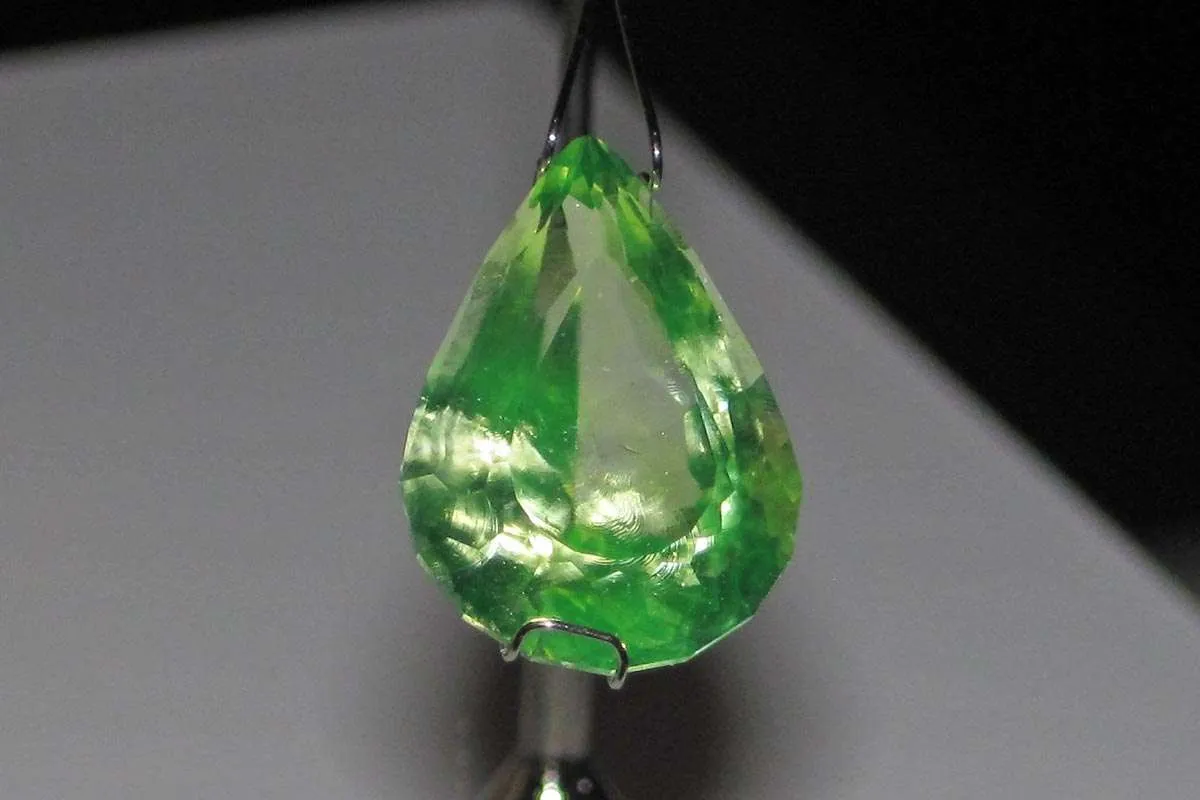
Hyalite, also known as Muller’s Glass, is a colorless opal with a glass-like appearance. It does, occasionally, tend to show a subtle tint of blue, green, or yellow. The hyalite variety, originating from Mexico, is locally known as Water Opal.
These stunningly unique Opals are famously found in two locations, namely; Oregon and Mexico; and are widely admired for their crystal clear appearance.
Another variation of the water opal is the girasol opal, which is a form of hyalite opal that has a bluish glow or sheen to it. This bluish sheen is able to move around in pursuit of the light source that illuminates it.
6. Light Opal
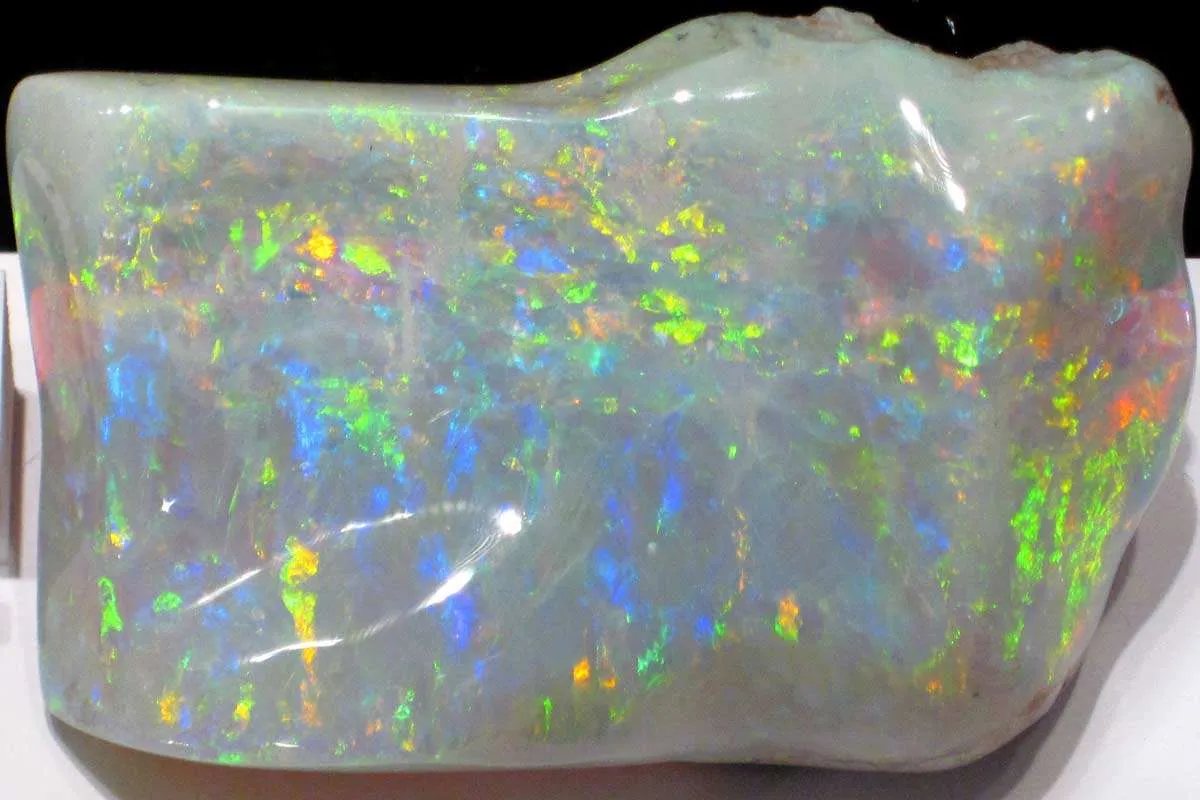
The Light opal has a characteristically light, translucent or opaque body that shows an intense display of colors.
It may be further divided into opals that fall in the cream to white colored opal range.
The lighter undertones mean that the opal will present a softer, pastel look and the play of colors on the stone itself will be more muted. Light opals may be found in the Brazilian, Australian and Ethiopian regions.
7. White Opal

One of the most commonly found types of opal, the white opal is also known as’ milk ‘or’ milky opal’. The White Opal is characterized by its light body tone and the ability to present any color of the spectrum in a spectacular display of colors.
White opals also contain a ‘white potch’ or colorless opal, mostly on the underside of the stone. However, this is not always essential.
Often the white opal could, almost entirely, consist of colorful opal. The absence of a dark background, though, means that the colors in white opal are usually not very enhanced or prominent.
8. Crystal Opal
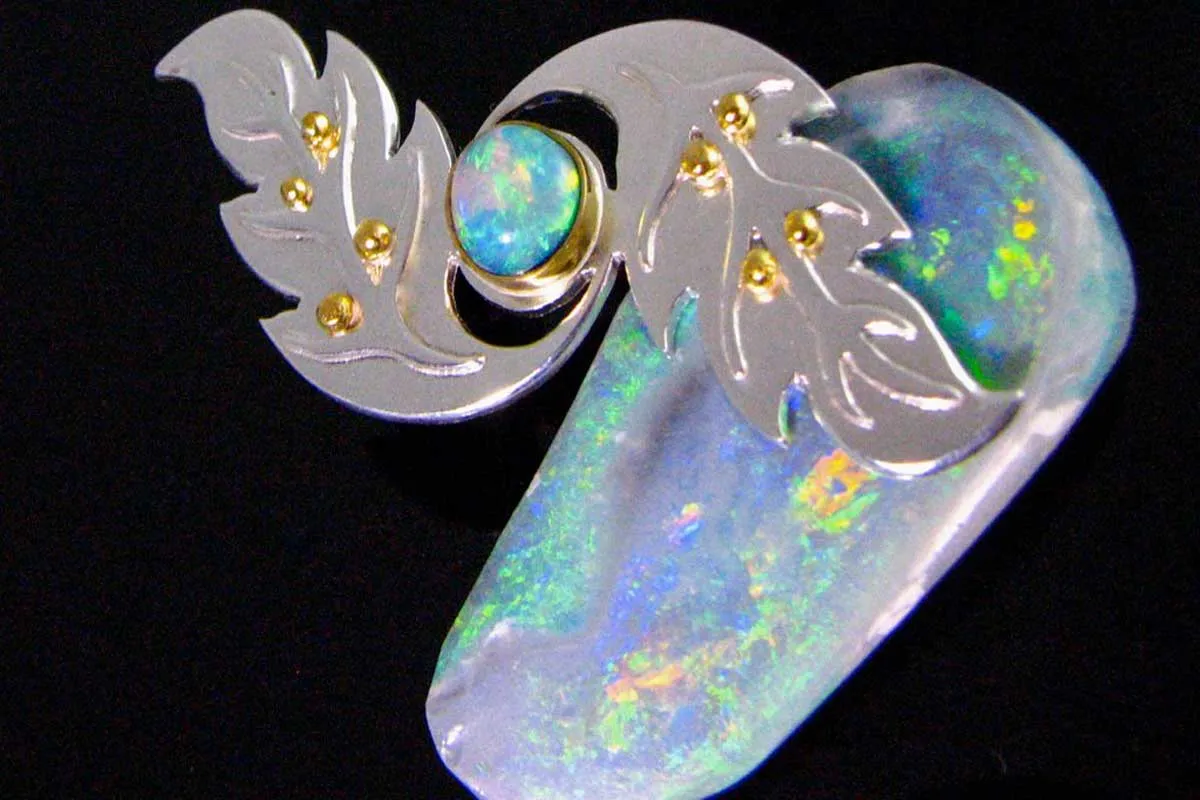
“Crystal Opal” is a term used to describe any opal with a transparent, translucent, or semi-translucent sheen to it. One easy way to recognize a crystal opal is to see if light is able to pass through the stone.
The amount of light that is allowed to pass through helps to measure the ‘diaphaneity’ of the stone in question. Crystal opals are distinguished by their ability to reflect light in a beautifully colorful display.
Crystal opals are different from boulder opals, though, since the latter has an opaque, backing of ironstone. The Crystal Opal’s translucence makes it clearer and allows it to display colors in more vibrant patterns than opals that are completely opaque.
9. Matrix Opal
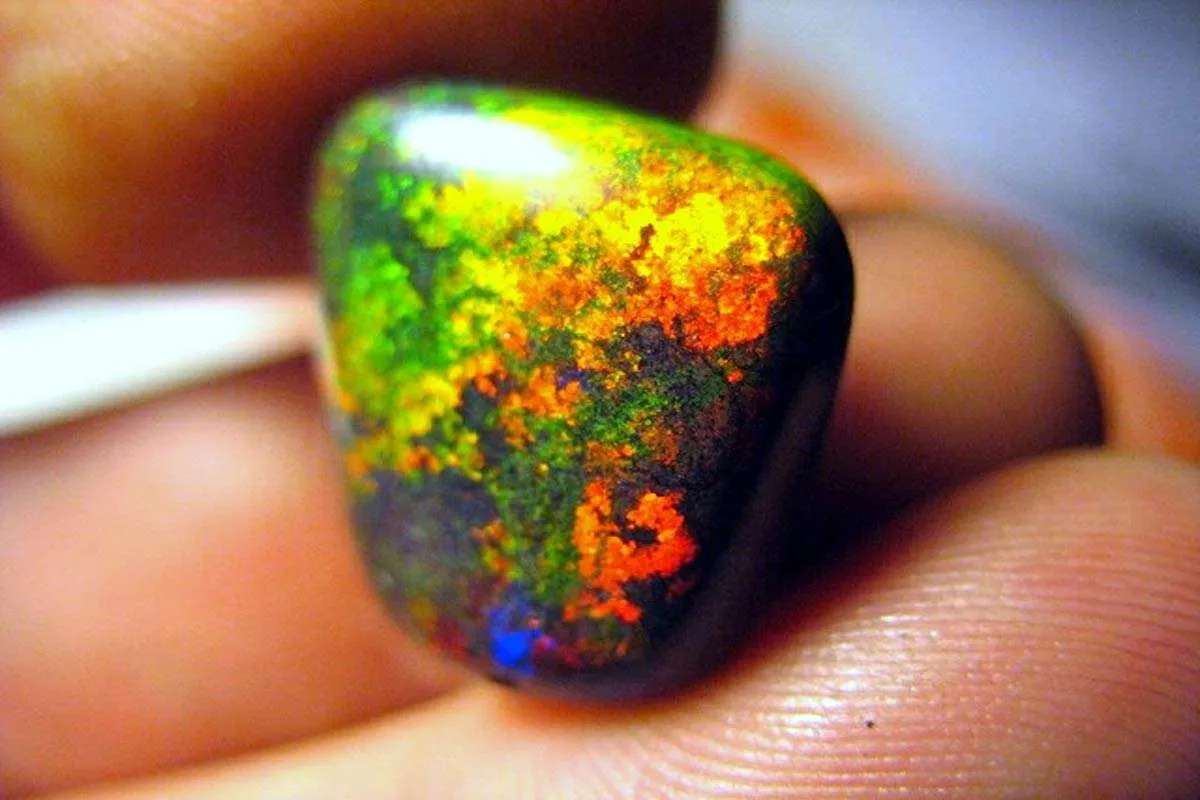
The Matrix Opal, or Type 3 Opal, as its name suggests, has a dense and intimate distribution of the precious opal throughout the stone. The host rock itself can be comprised of precious opal that exists as a cementing agent, between the sediment particles.
The play-of-color opal can occur as a replacement of the host material itself or as an infilling of the host rock’s minuscule vesicles. The resulting mixture looks like the host rock but consistently displays flashes of precious opal that flashes from within.
An accurately cut Matrix Opal, when held under a light source, will exhibit a beautiful array of play-of-color shining out from within. Moving one’s head from side to side while viewing the stone will also allow the precious gem to flash in a beautiful display.
Cutting of the Matrix Opal, however, must be done carefully, after first studying the rough rock properly. This will allow the cutter to understand the distribution of precious gems within the rock, as well as the orientation that is triggered when an incident ray of light hits the stone.
The stone cutter will then be able to cut the stone in a way that will capture all of its beauty and magnificence. Australia, Mexico, and Honduras are the most popular localities where Matrix Opal is found.
10. Peruvian Opal
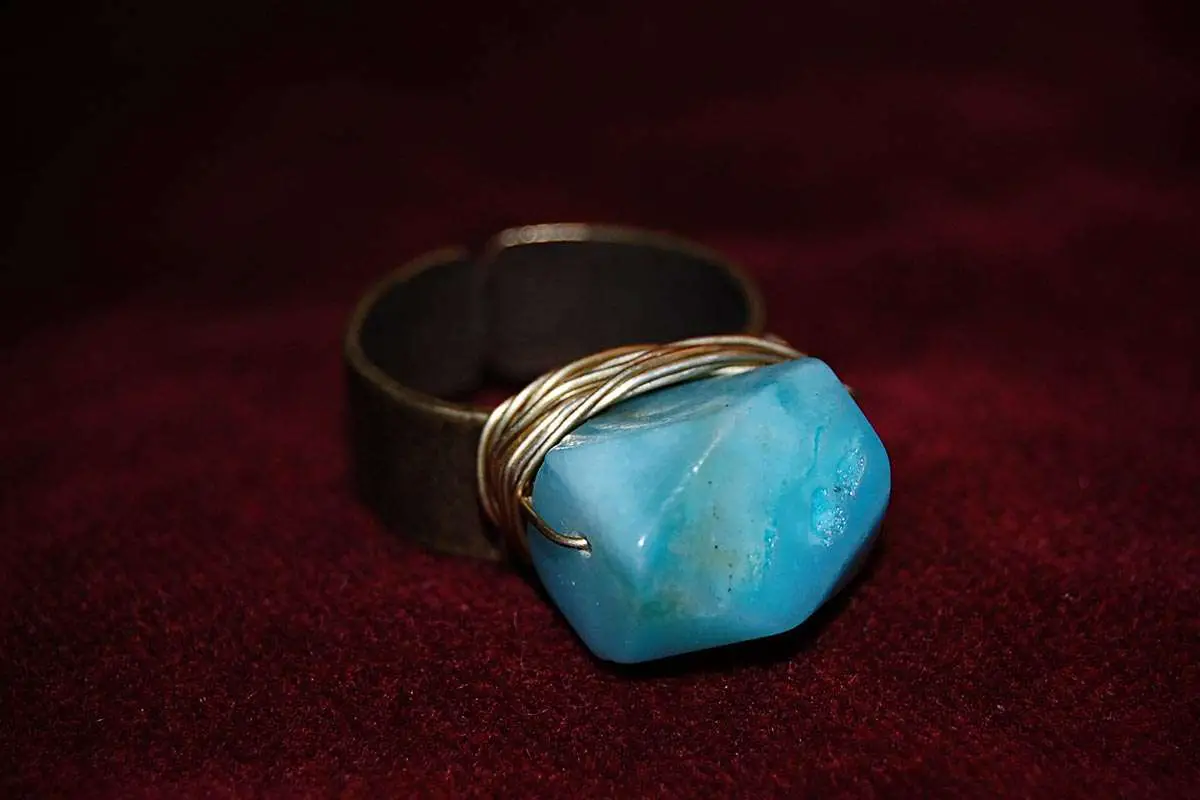
The name itself is enough of an indication, of course. The Peruvian Opal originates in the Peru region of Southern America.
The stone itself occurs in beautiful, pastel shades of pinks, greens, and blues. It is an opaque to translucent stone. The Peru opal lacks the distinctive play-of-color quality that is an inherent part of precious opal and therefore falls in the ‘common opal’ category.
The colors of the opal stones themselves are too beautiful and unique to ever be considered common by connoisseurs of the gemstone. Peruvian Opals are commonly used as beads, tumbled stones and cabochons.
Peruvian Opals are generally inexpensive, although the semi-translucent variety may cost more than the plain, pastel-colored gems.
11. Pink Opal
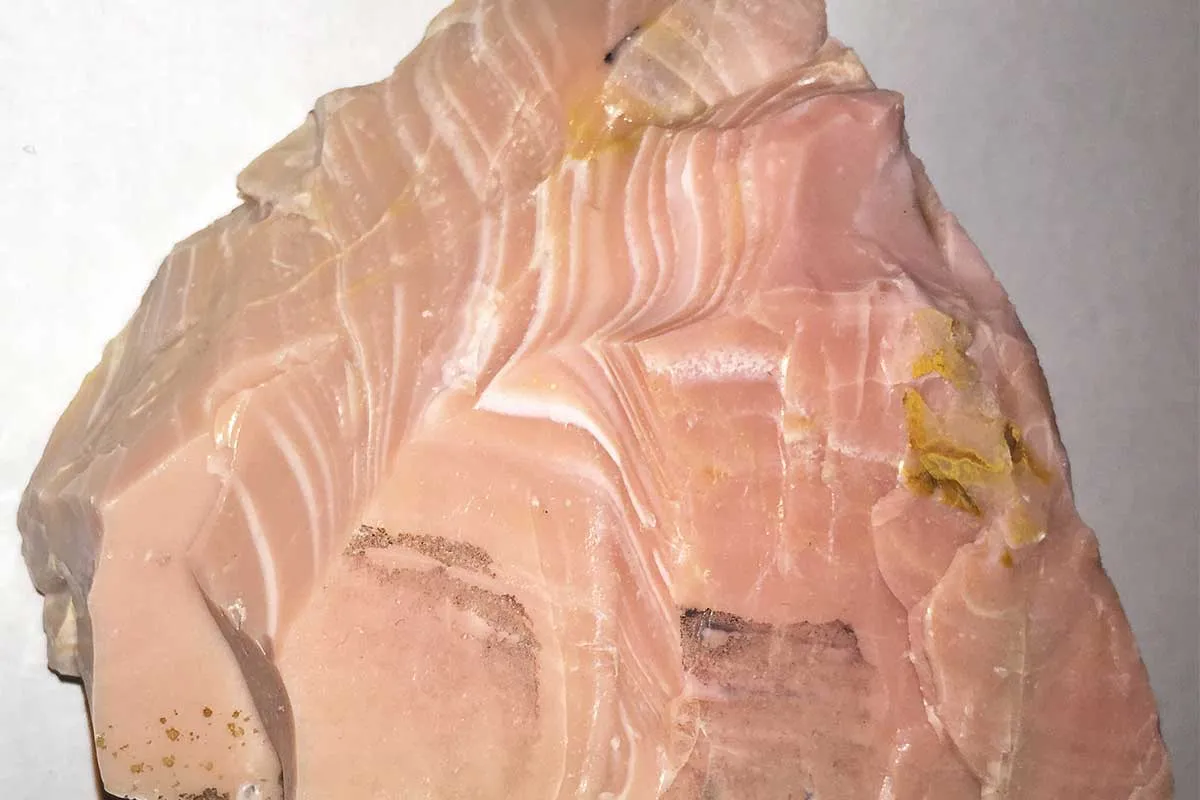
Certain types of opal are found in shades of pink. These “pink opals,” as they have come to be known as, are commonly mined in Peru and rarely in parts of Oregon.
The pink opal is usually a small four millimeter long gemstone with a continuous variation in color; ranging from almost white in color to bright pink and even lilac.
The largest quantity of pink opal stones is mined in Peru. However, other places like Oregon also have a small but significant amount of the gem. It is also common for the lighter-tinted rhyolite-hoisted fire opal from Mexico to be considered a “pink Mexican opal.”
Opals through the ages
Opals are one of those rare, precious stones that feature in ancient Greek mythology. The Greeks called them “Opallios”, which literally translates to ‘color of change’.
The idea was that the joyful tears Zeus shed upon defeating the Titans turned into these beautiful opals.
Another piece of historical trivia associated with opals is that they have the ability to bestow divine gifts and powers upon the users.
It is said that in ancient times various types of opal were believed to have certain healing effects. This belief persists to date and is the basis for the belief that the opal is a lucky gemstone in many cultures.
Frequently Asked Questions (FAQs) about Opal Stones
How does rainwater cause formation of the common opal?
Rainwater pours into the fractures within the rocks, causing them to swell. Over time, the water evaporates, leaving silica remains behind.
The silica remains then dry out and thicken over time to form different types of opal. The distinguishing feature amongst most opals is probably the wildly different color that these gems portray.
It is perhaps most common to hear the term ‘Coober Pedy’ associated with opals. It is of course because Coober Pedy is known as the ‘Opal capital of the world’.
The town of Coober Pedy earned this accolade by producing the most vastly colored opals seen. It is agreed that the most common opal comes from here.
This opal was formed hundreds of years ago, when the region was drowned under the ocean. This is also where most Australian Opal comes from.
What makes opals different from other stones?
What fundamentally distinguishes an opal from any other precious stone is its internal structure and the characteristic features that accompany it. An opal is made up of hundreds of millions of distinct silica crystals of various shapes, sizes, and colors.
These silica crystals are often spheres that act as tiny prisms, deflecting light into a stunning display of hues. This is what makes it a visual delight to gaze upon the precious opal stone.
What’s more amazing is that opals come in a variety of shapes and sizes, each displaying its own unique beauty and color gradient.
The internal silica-based structure of the opal means that under varying conditions, different types of opal with significantly unique appearances can form. This means that in different regions of the world, various types of opal with unique color gradients may be found.
